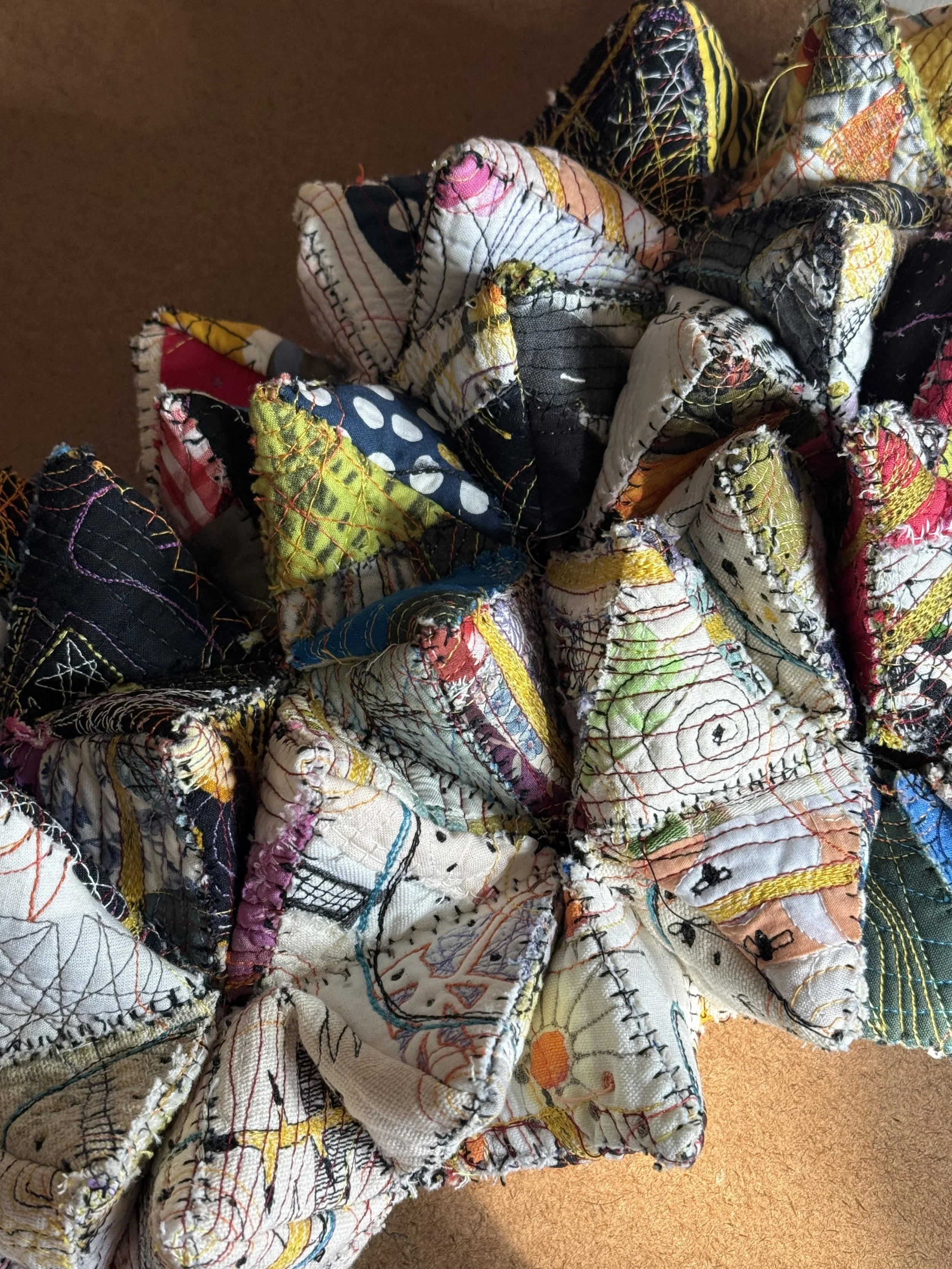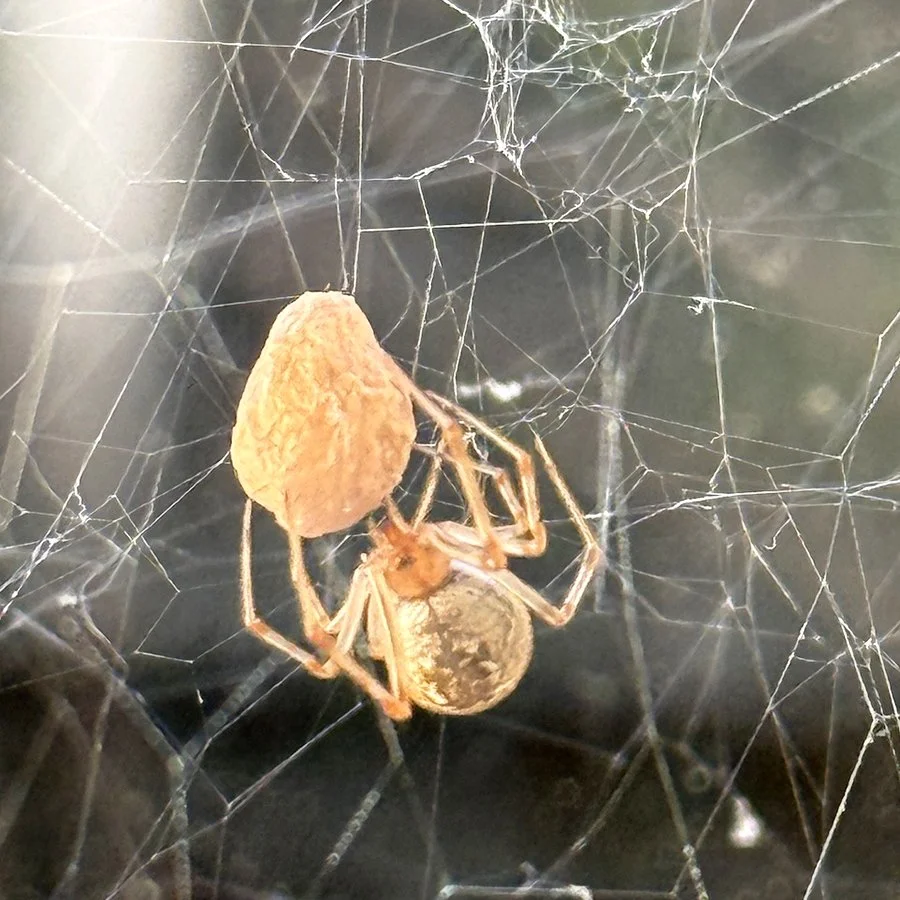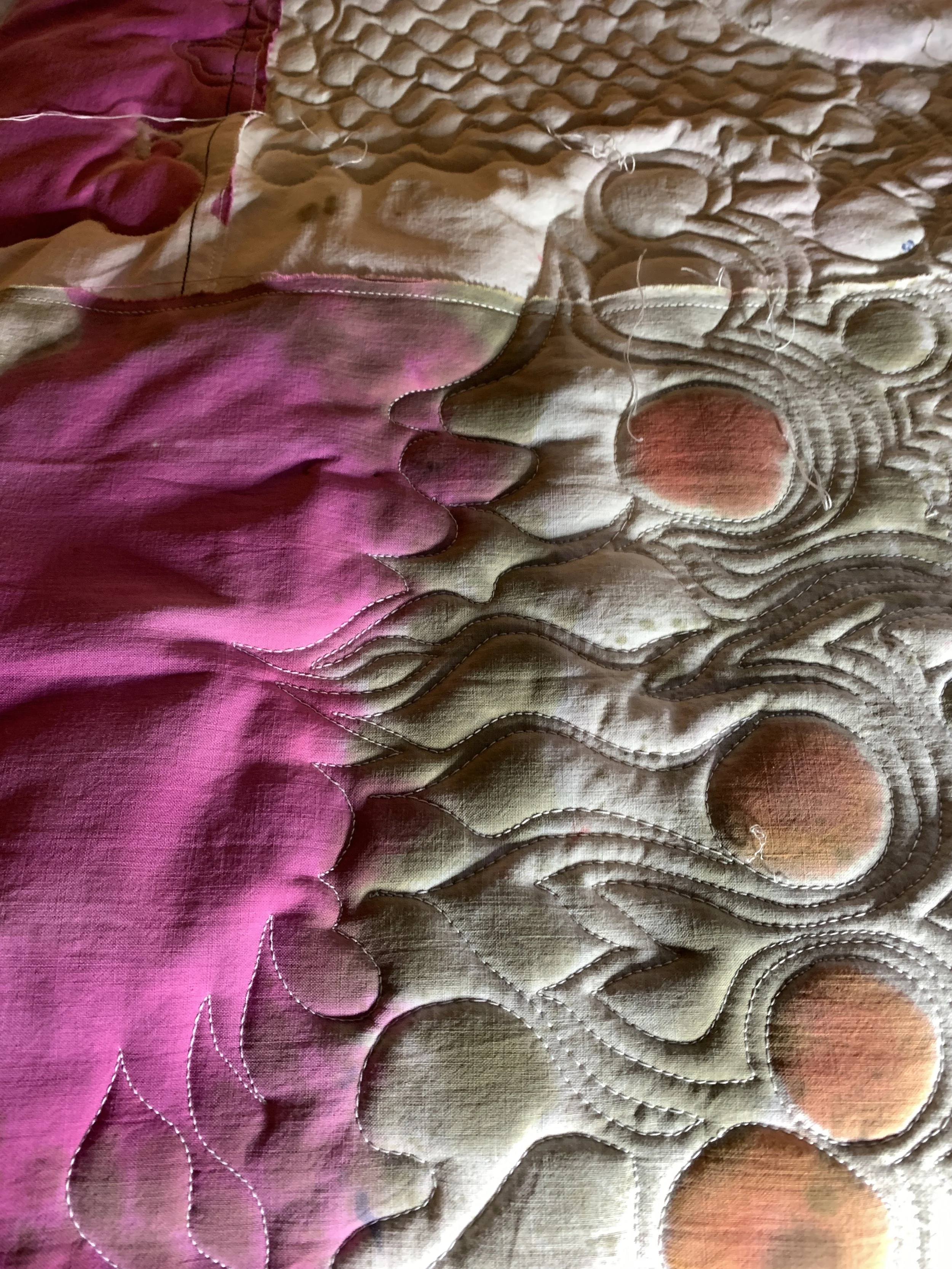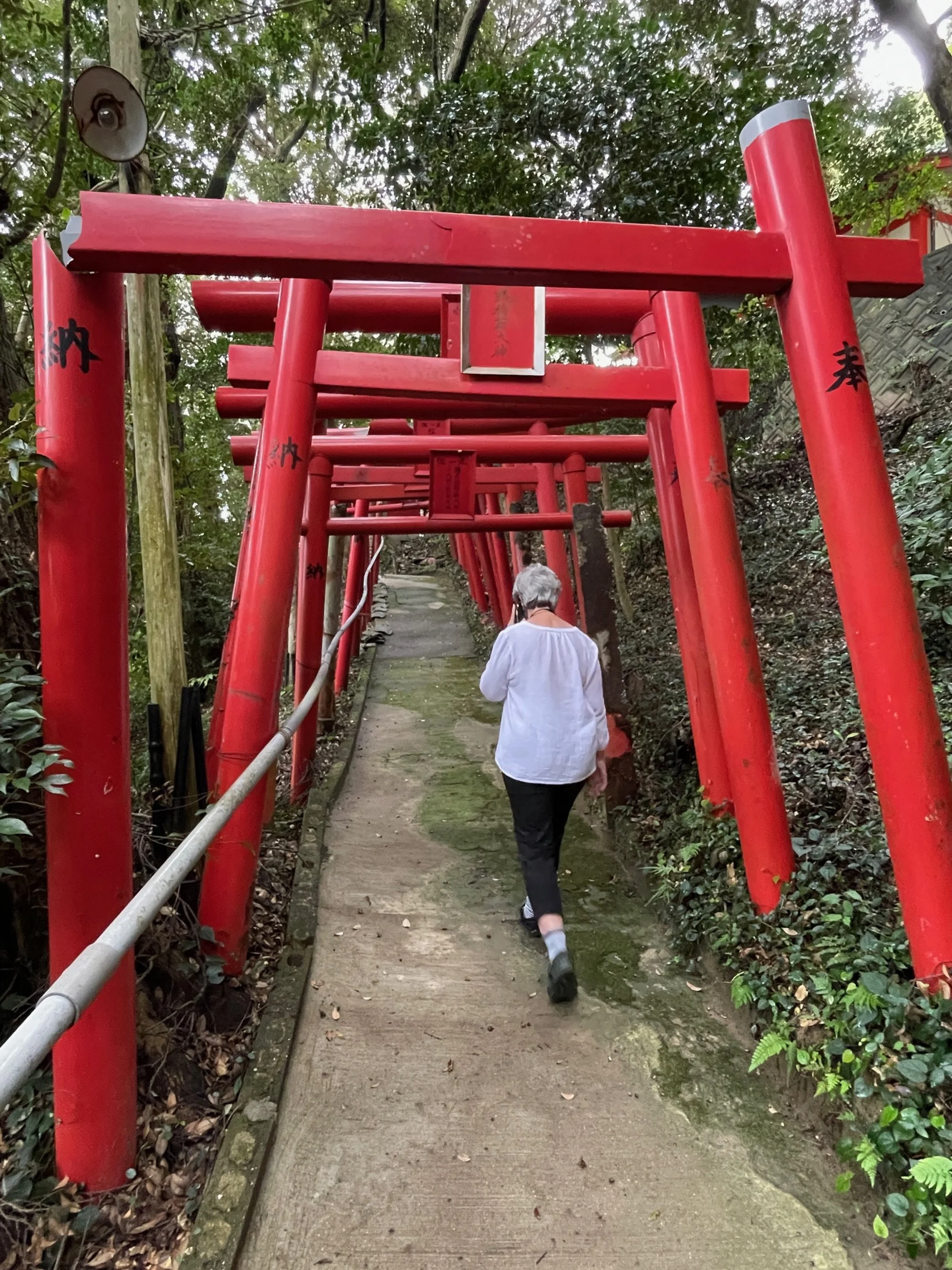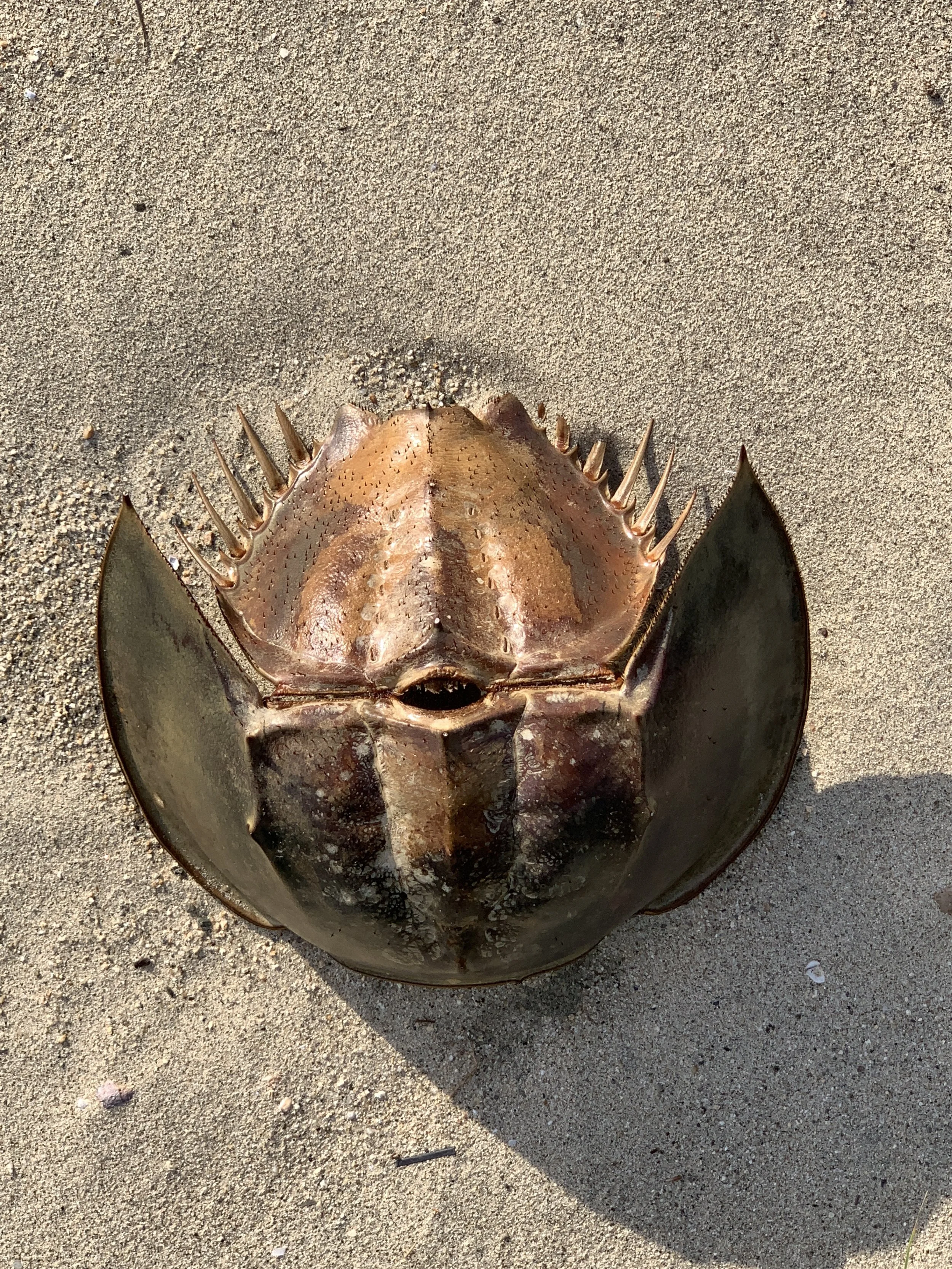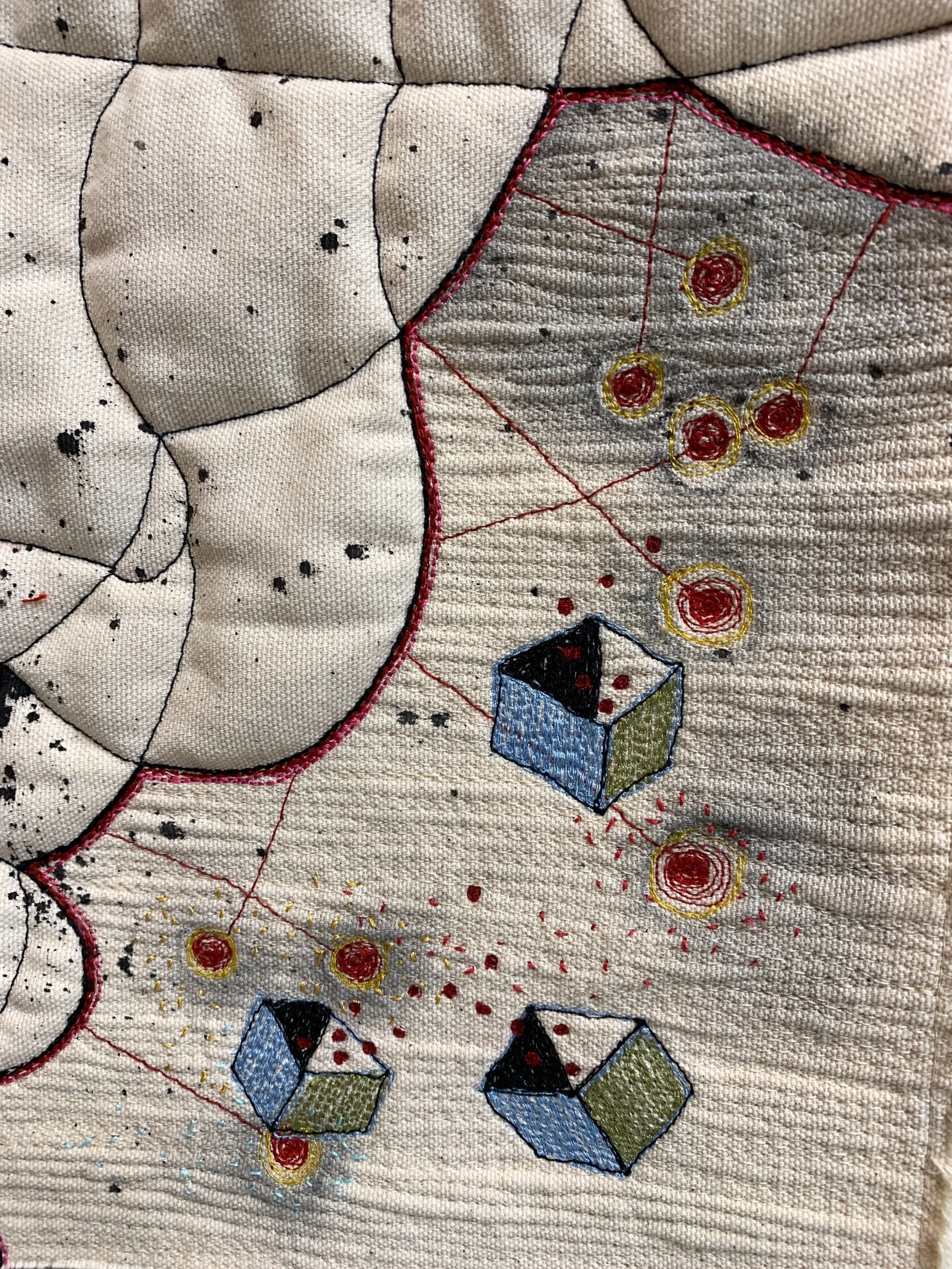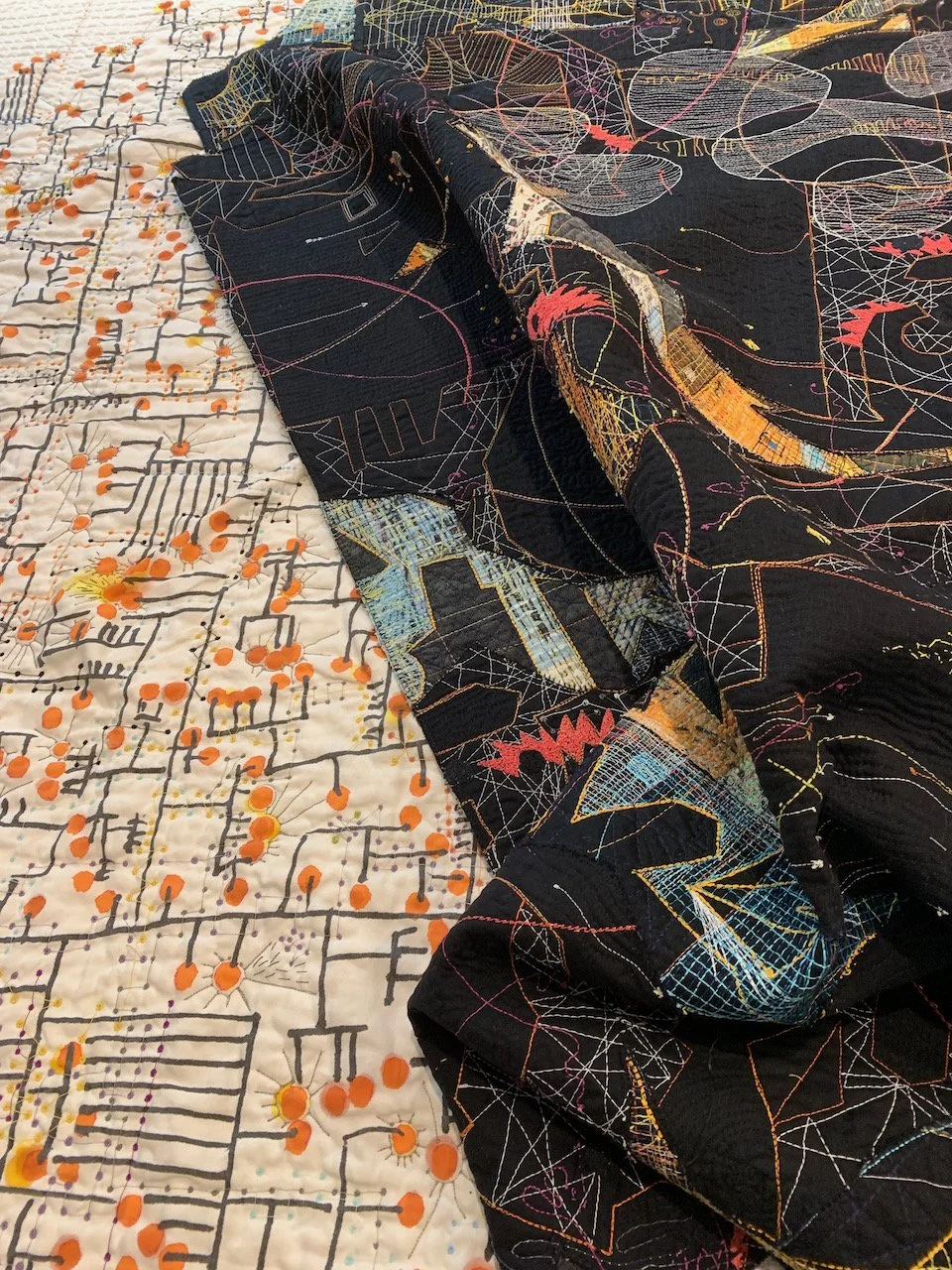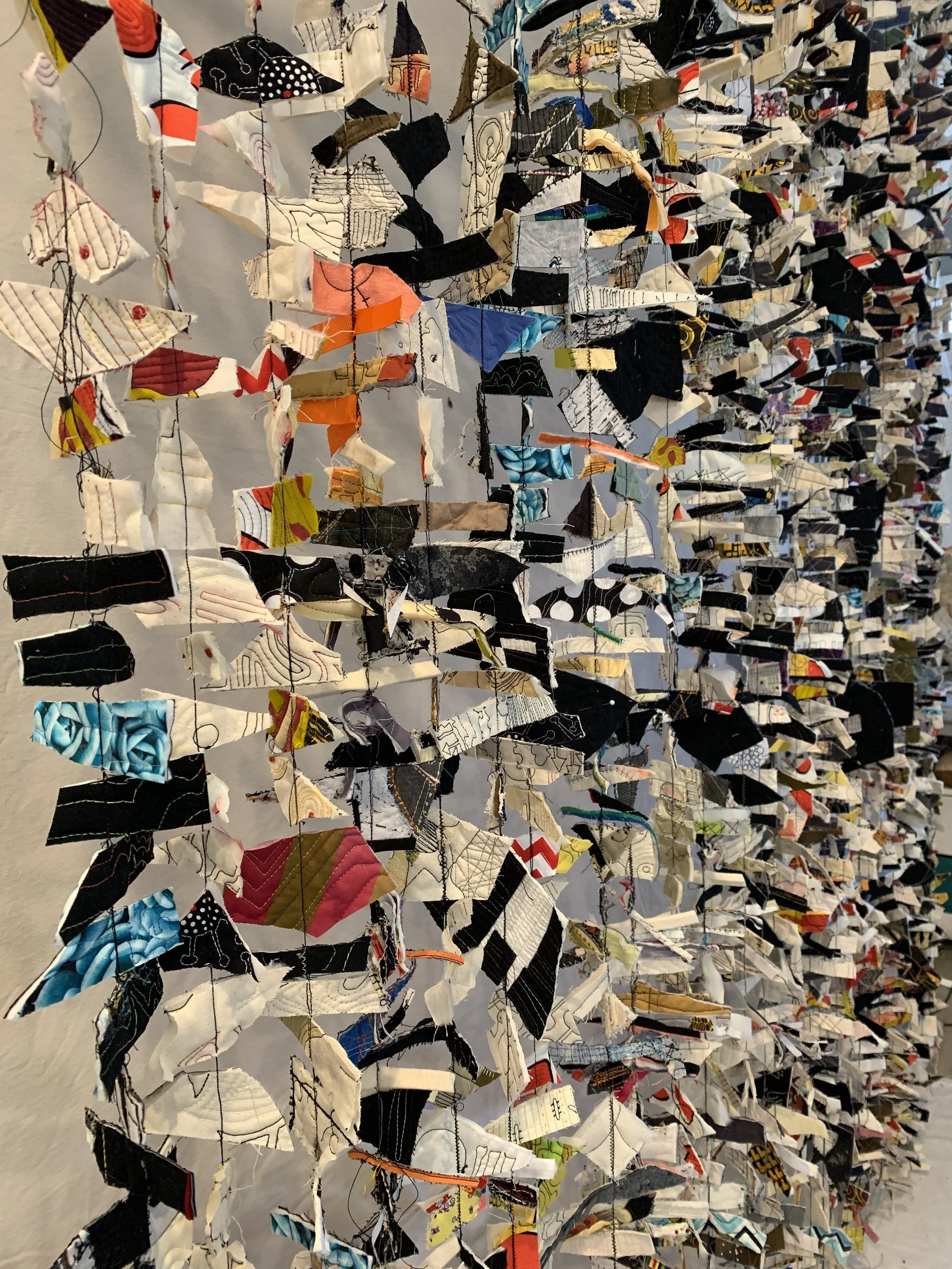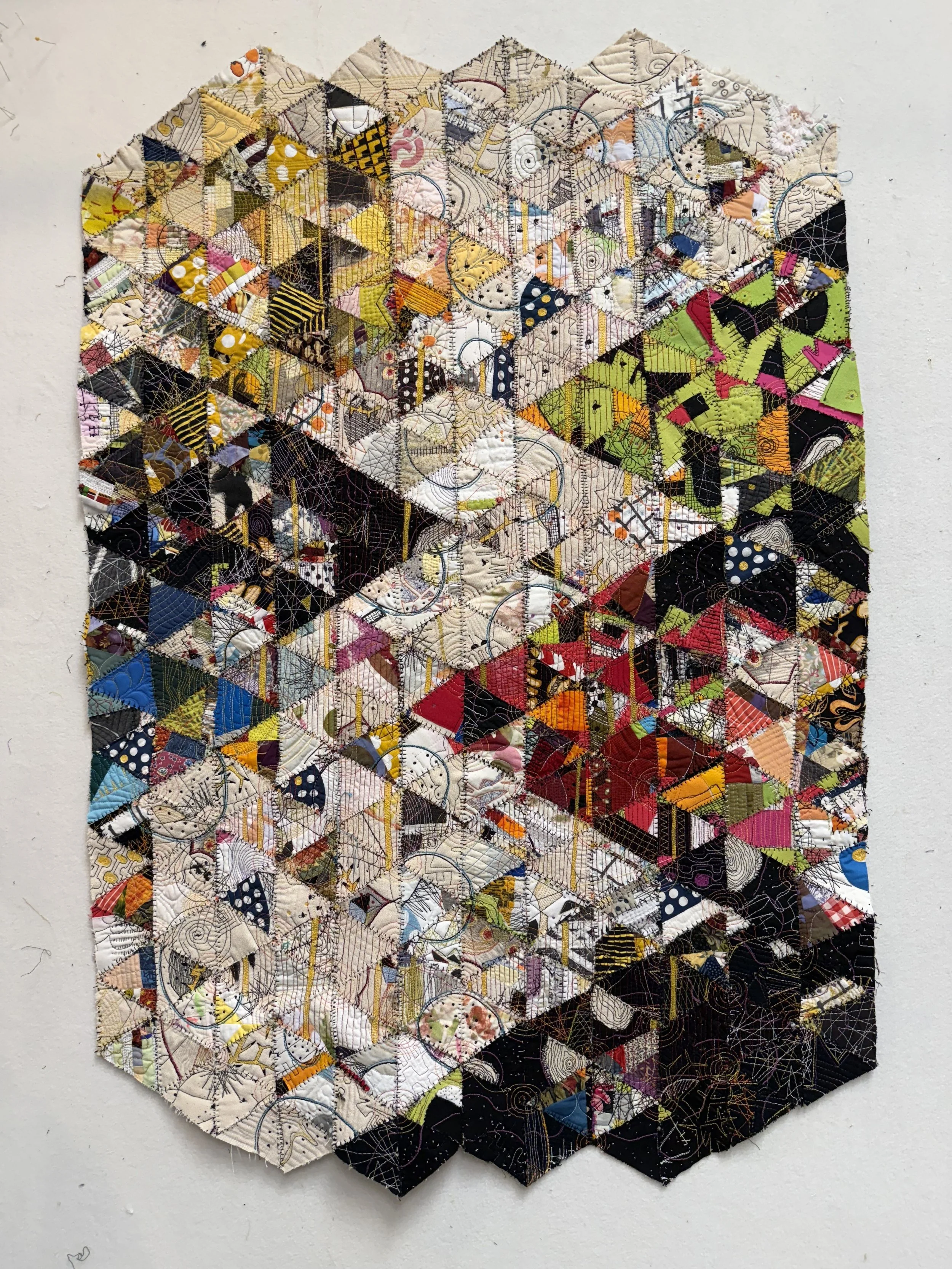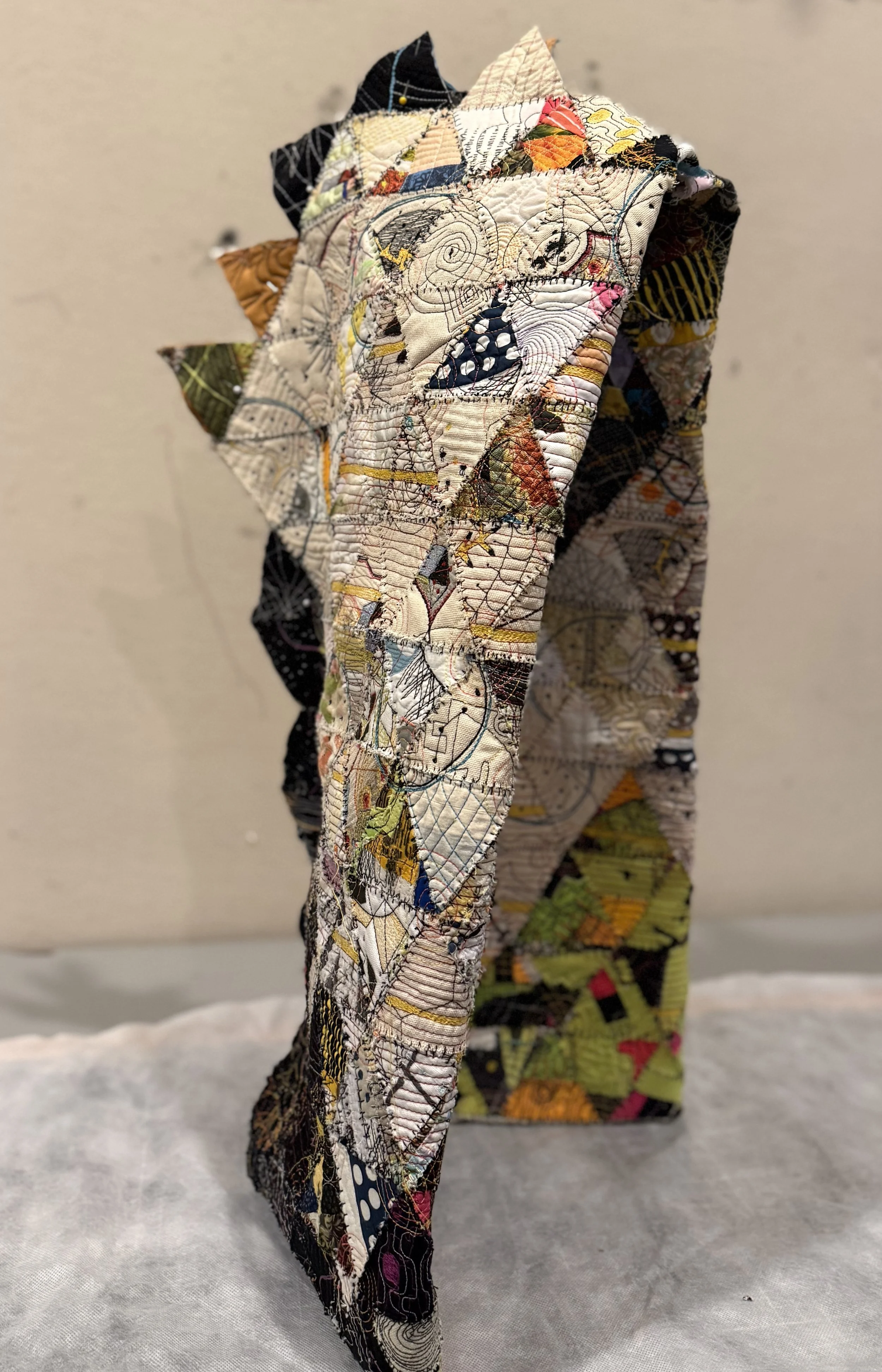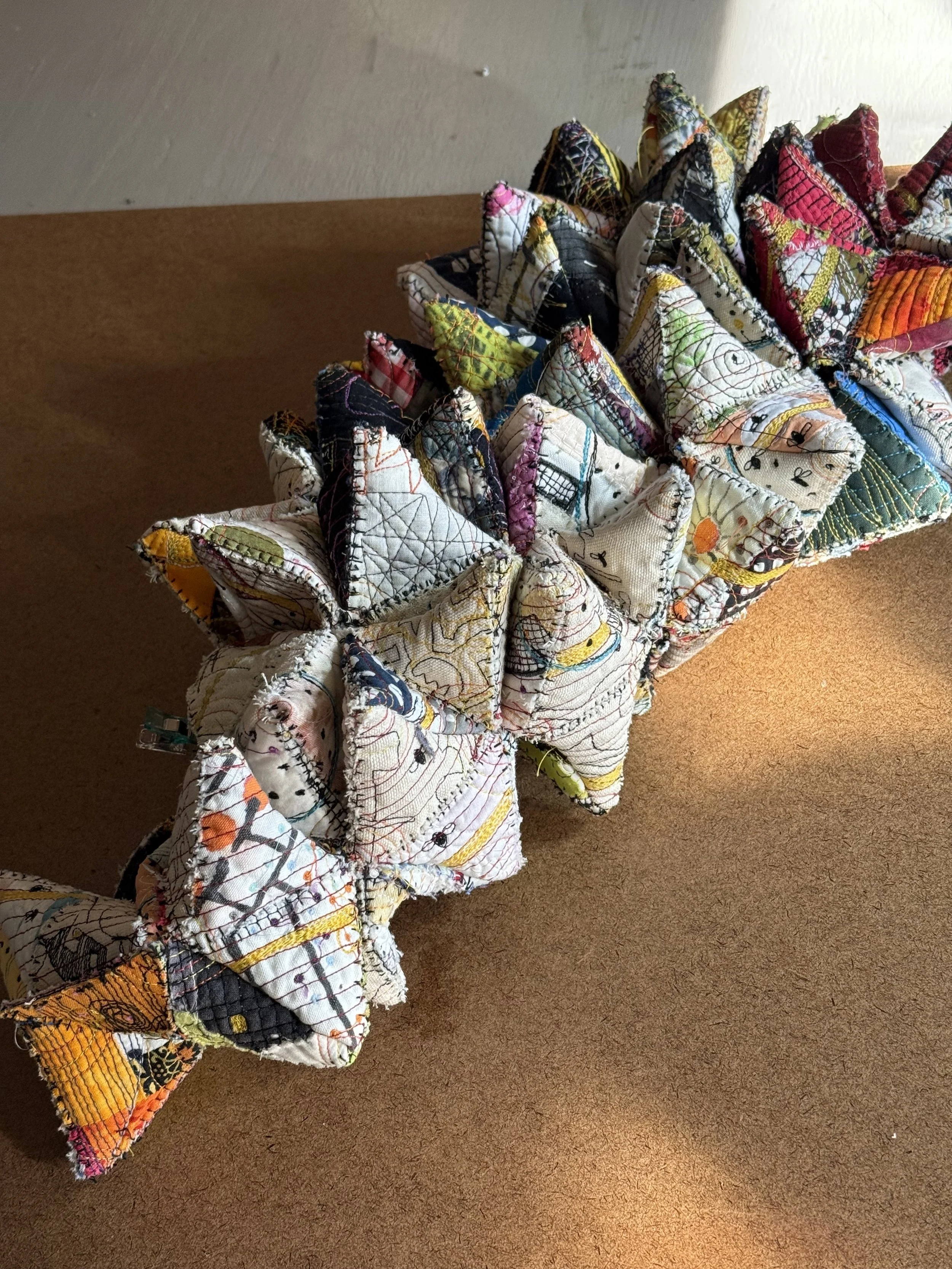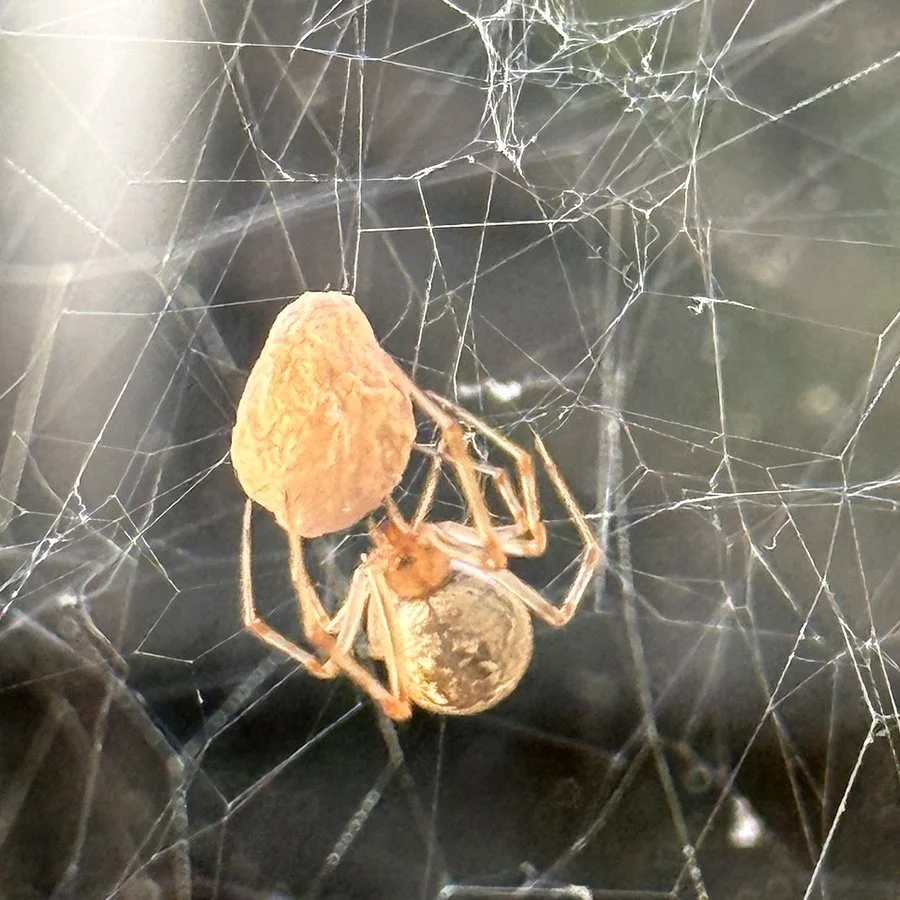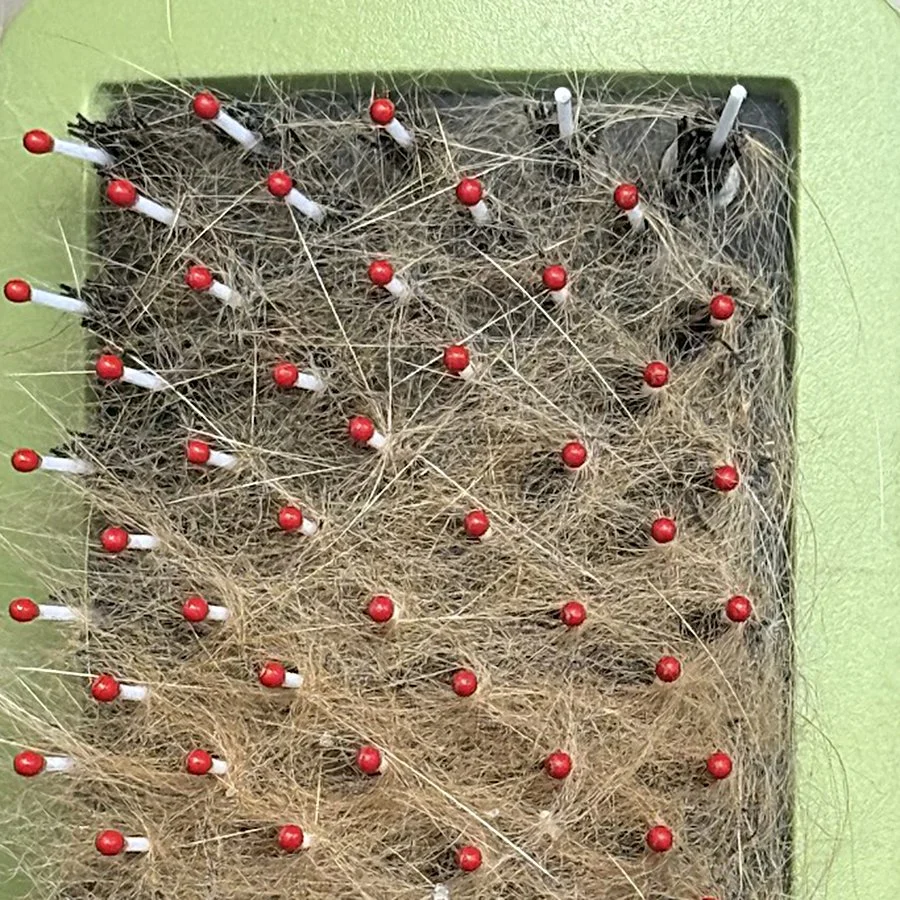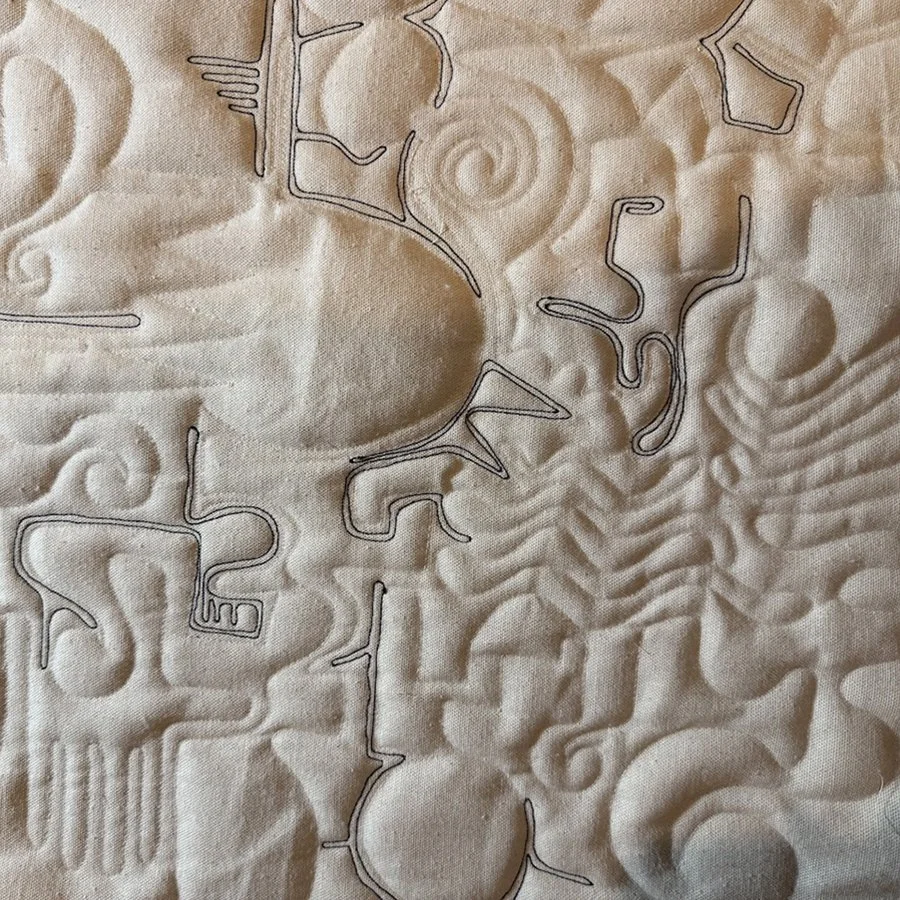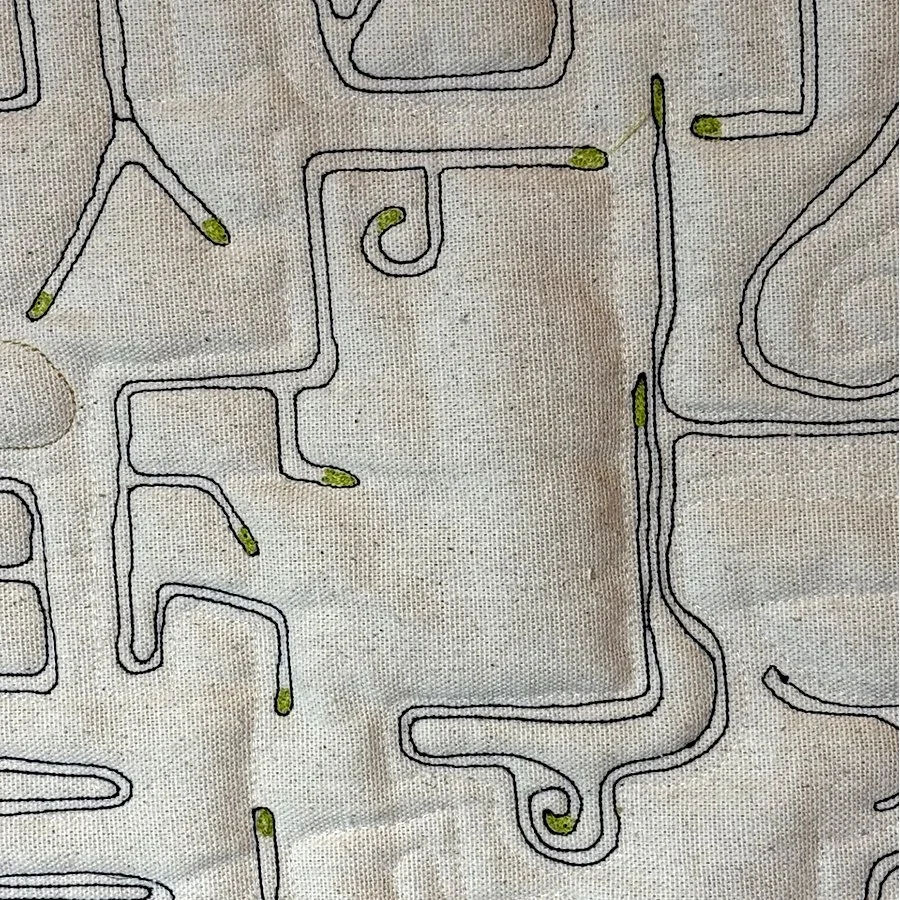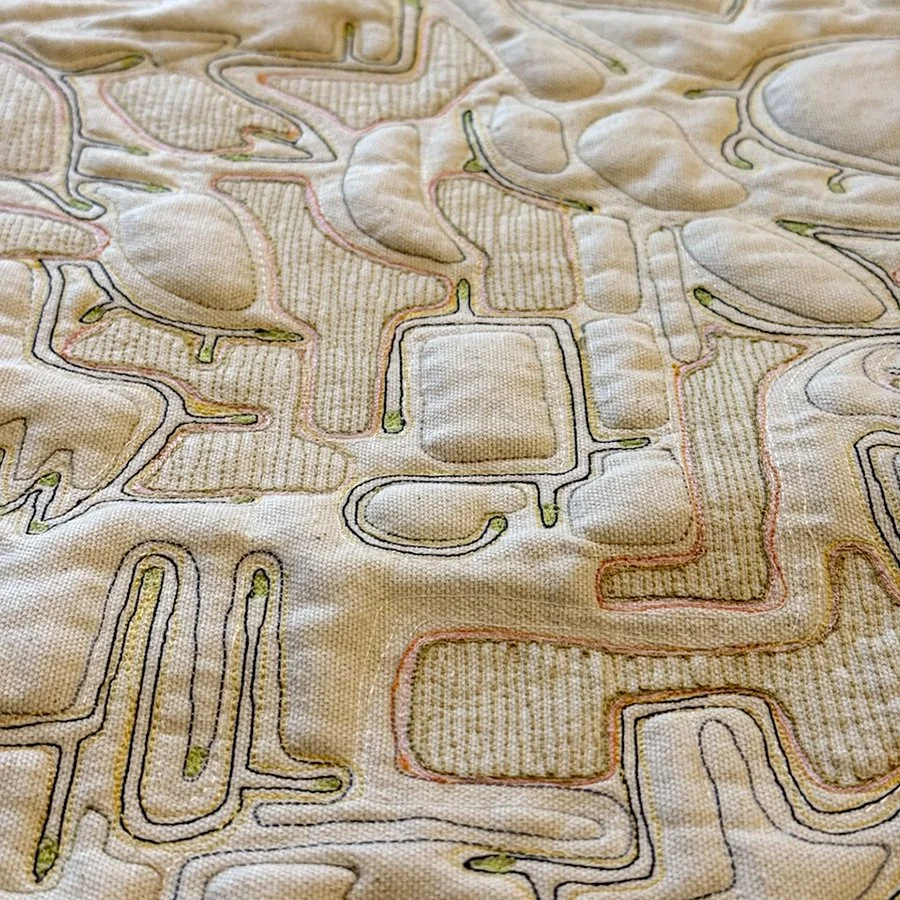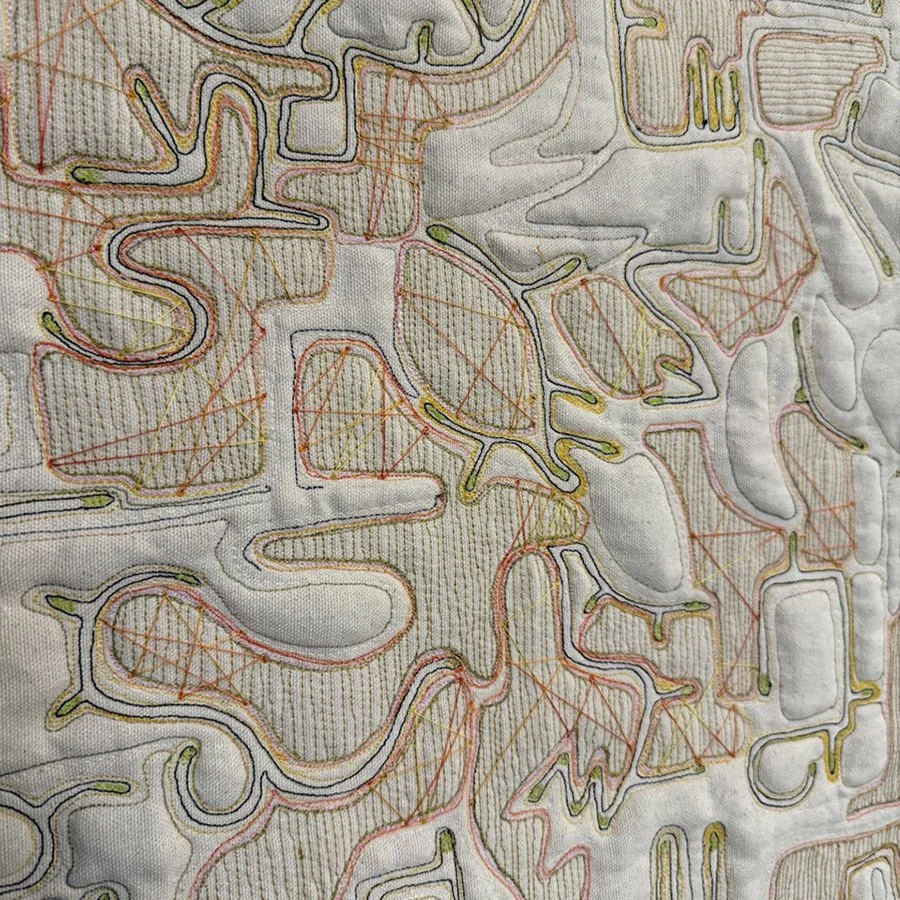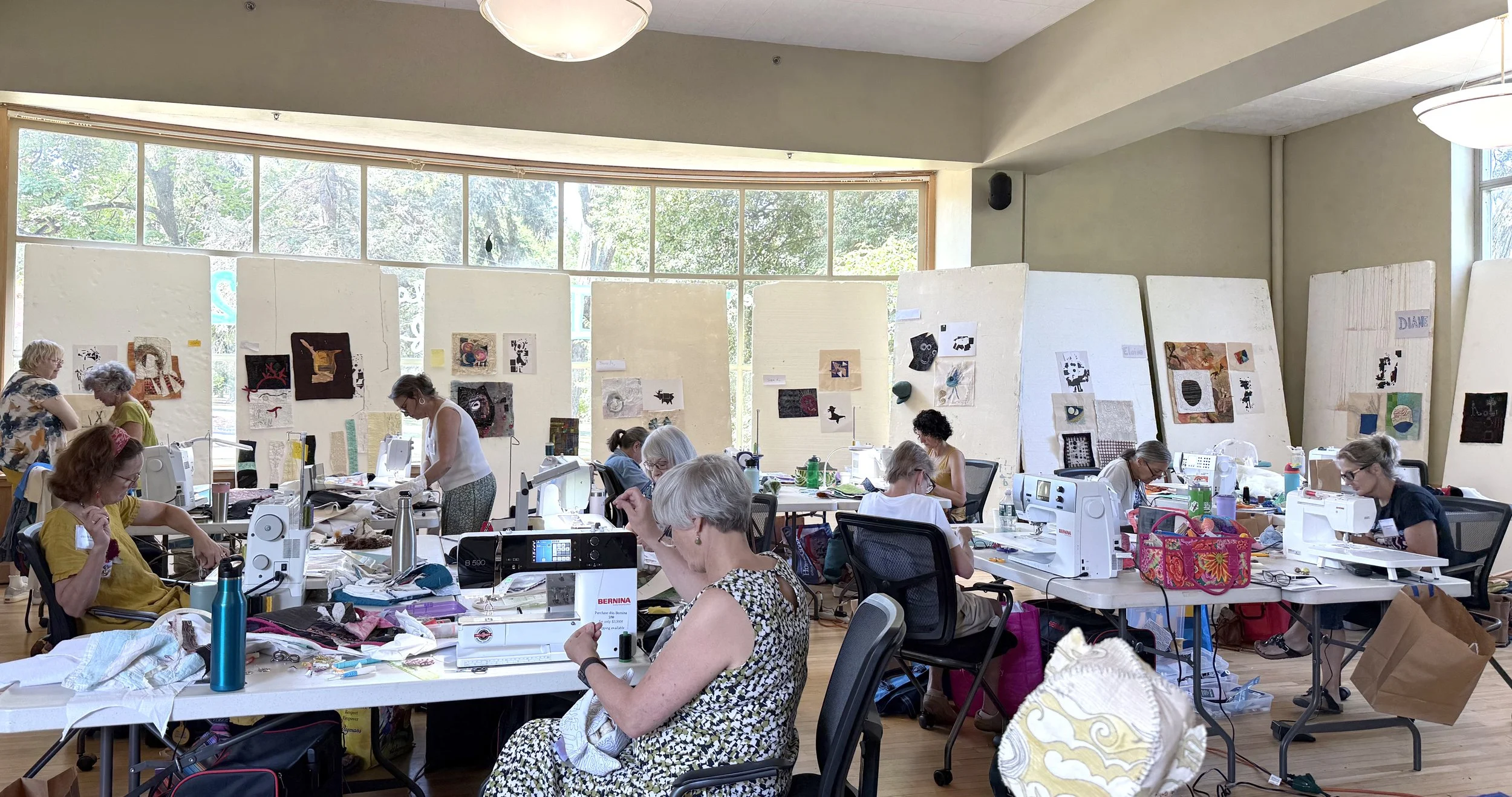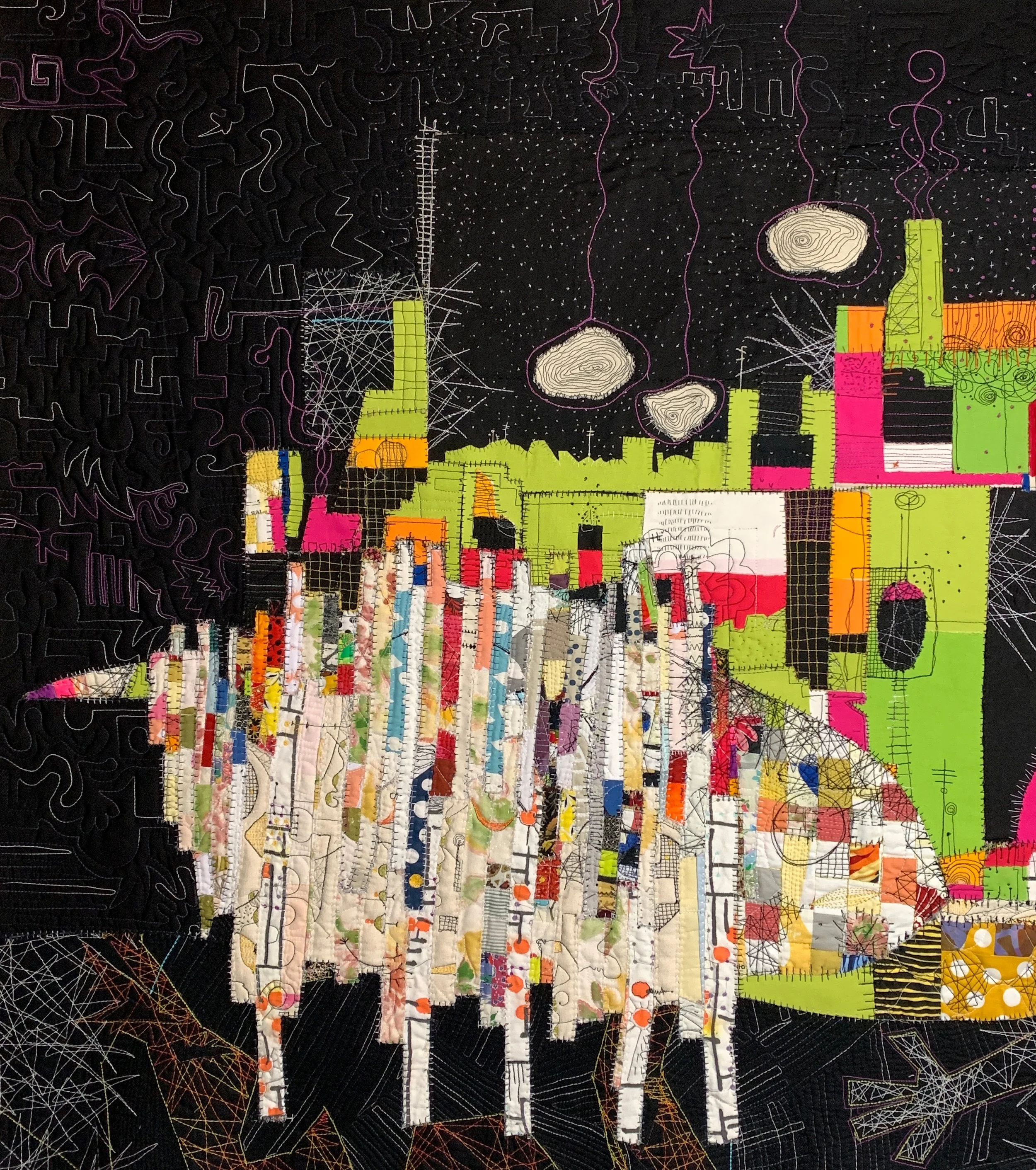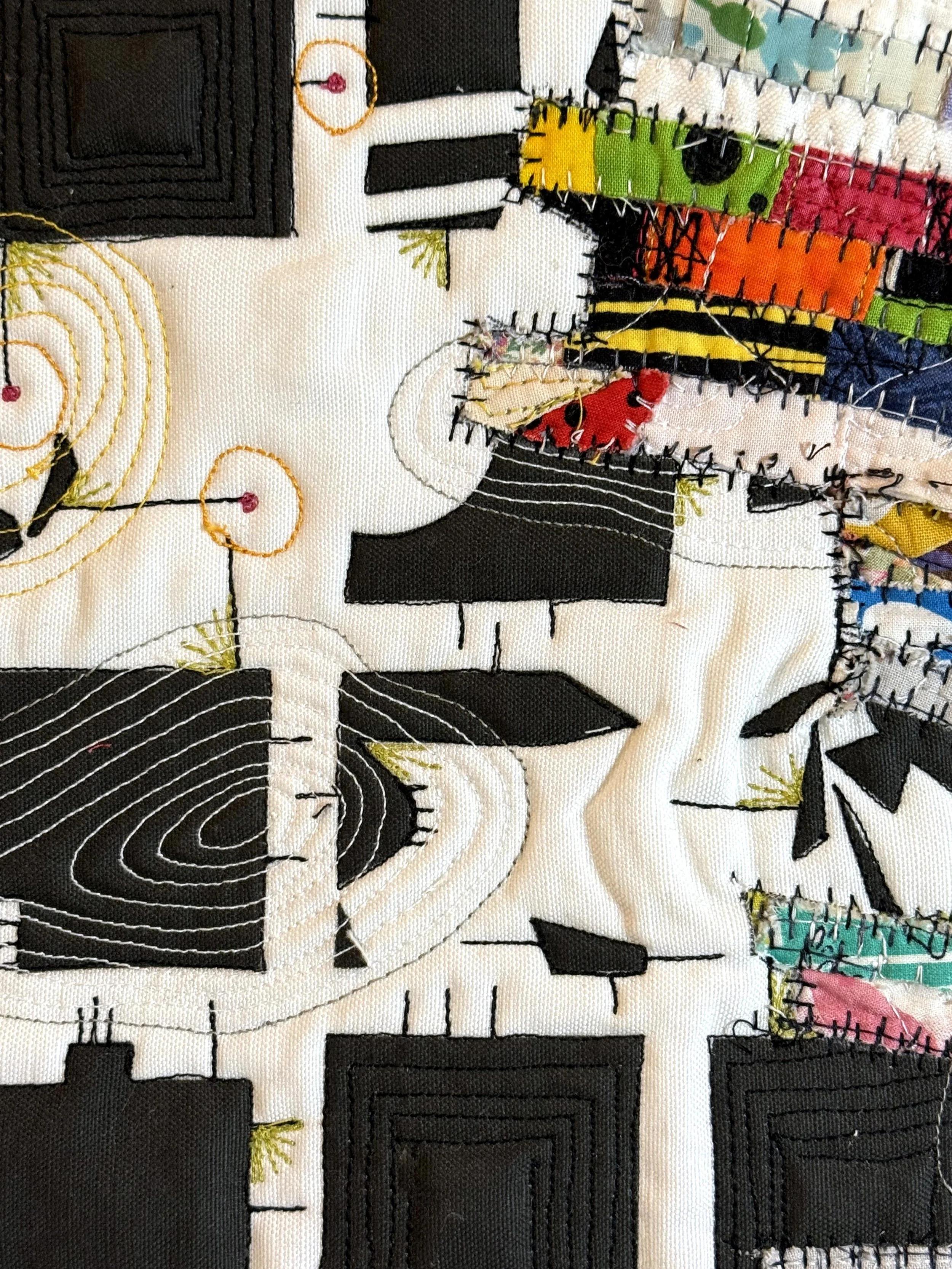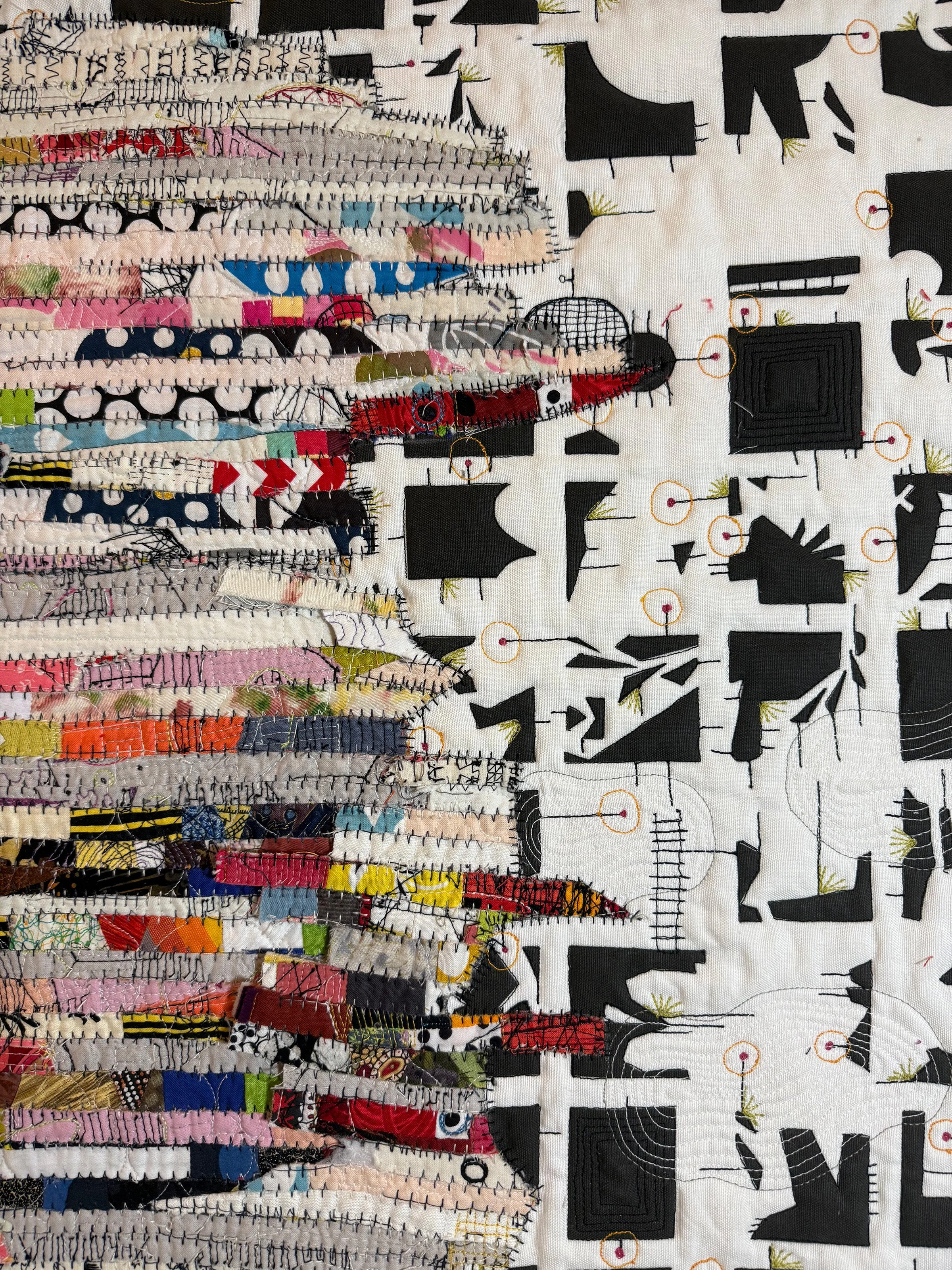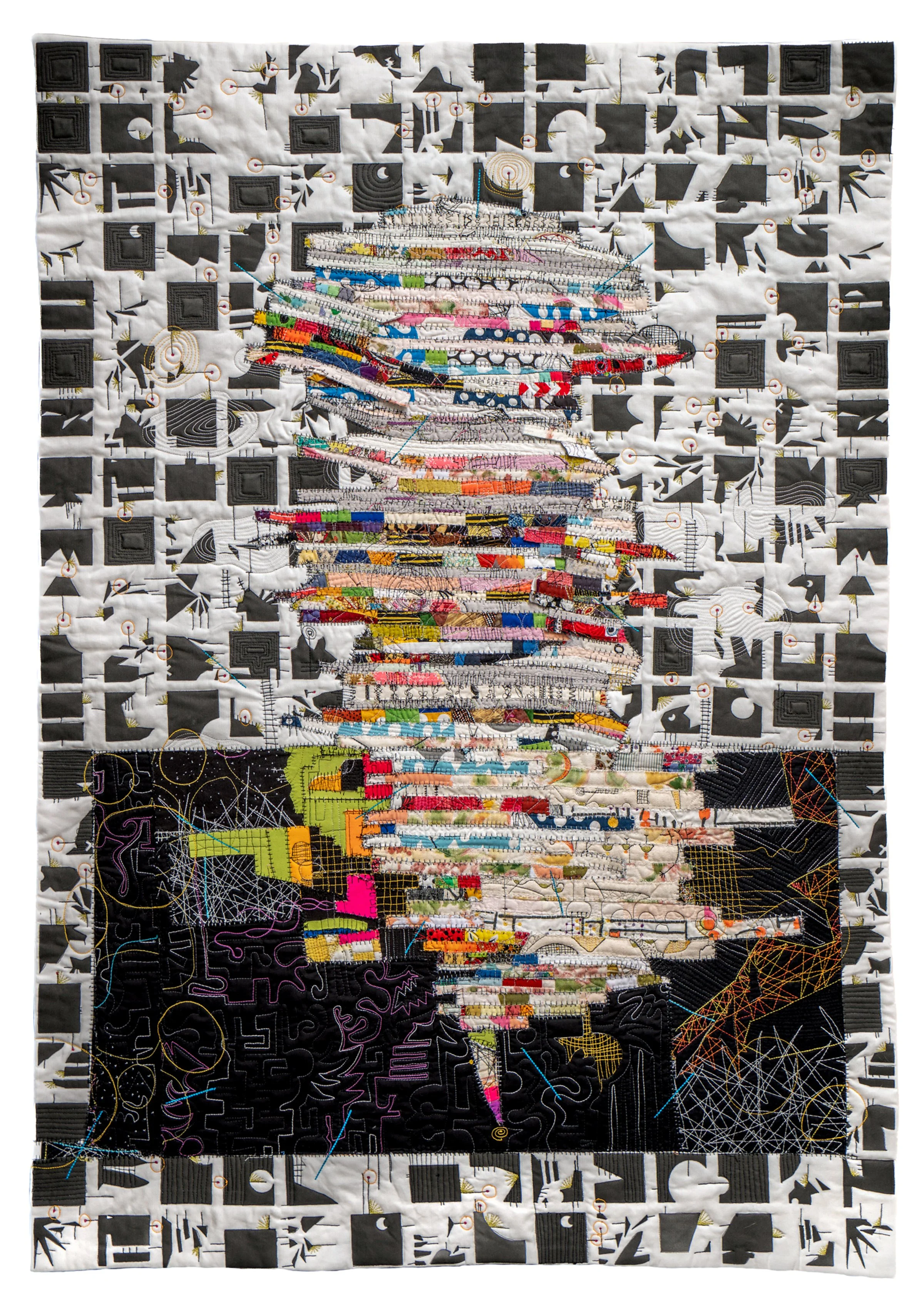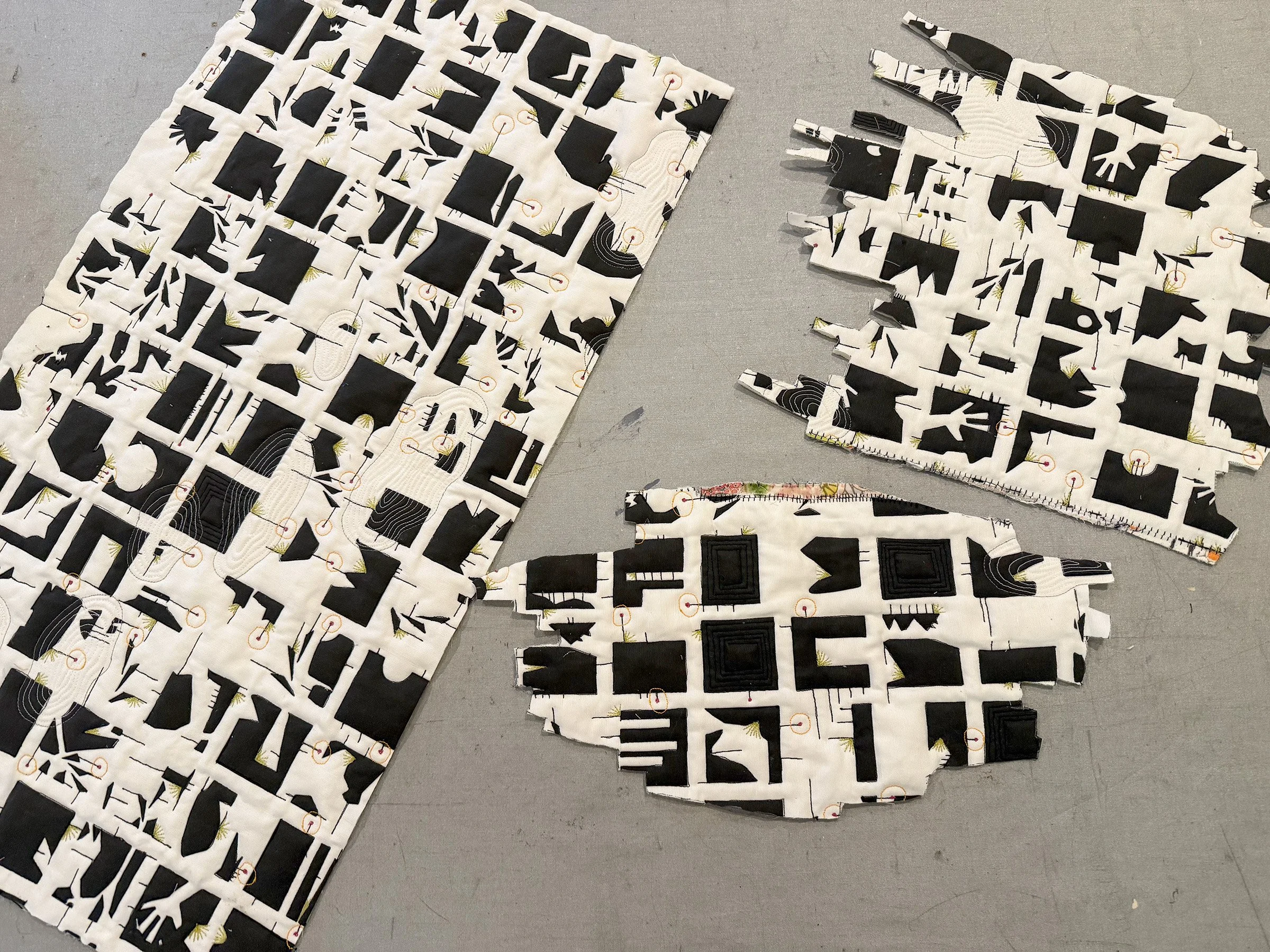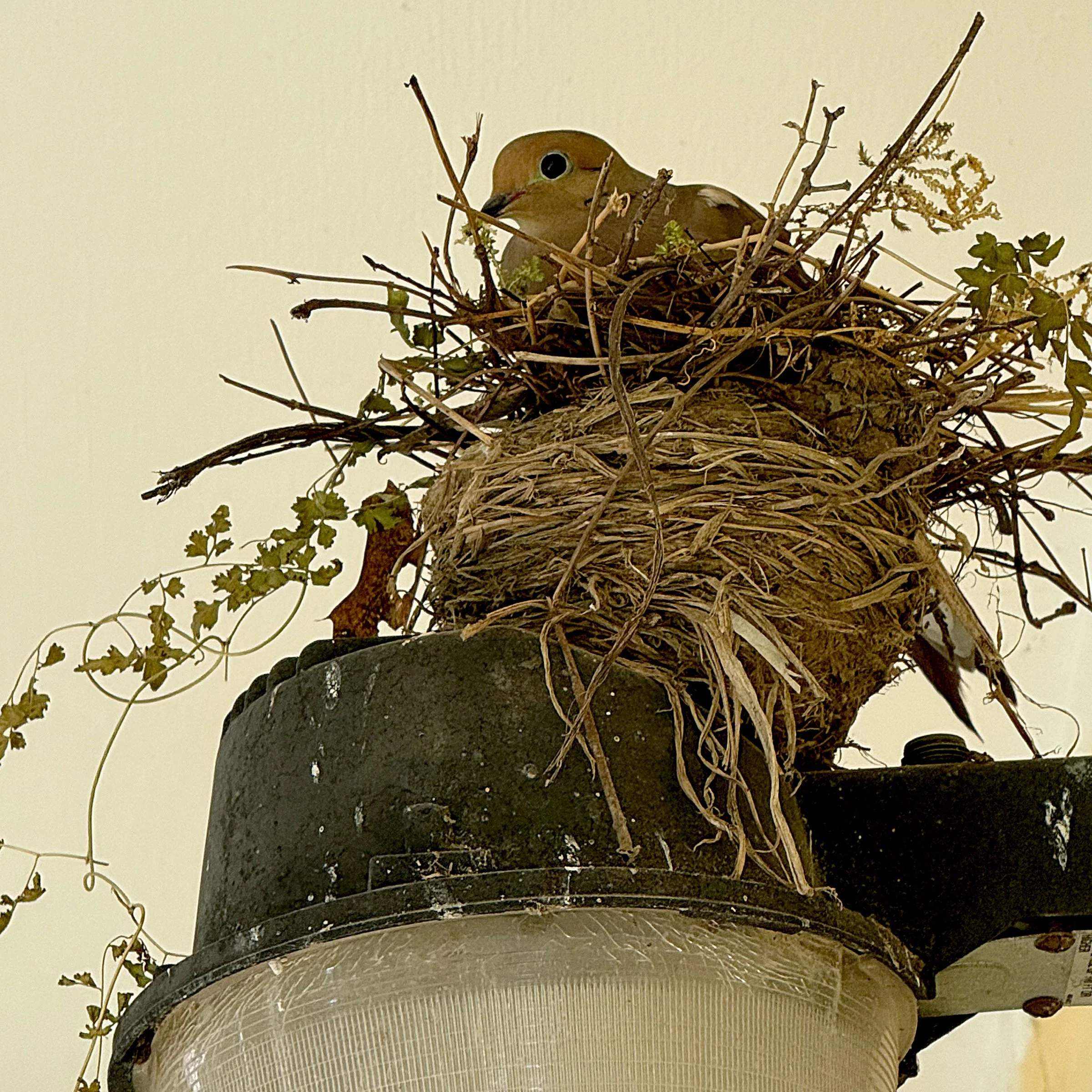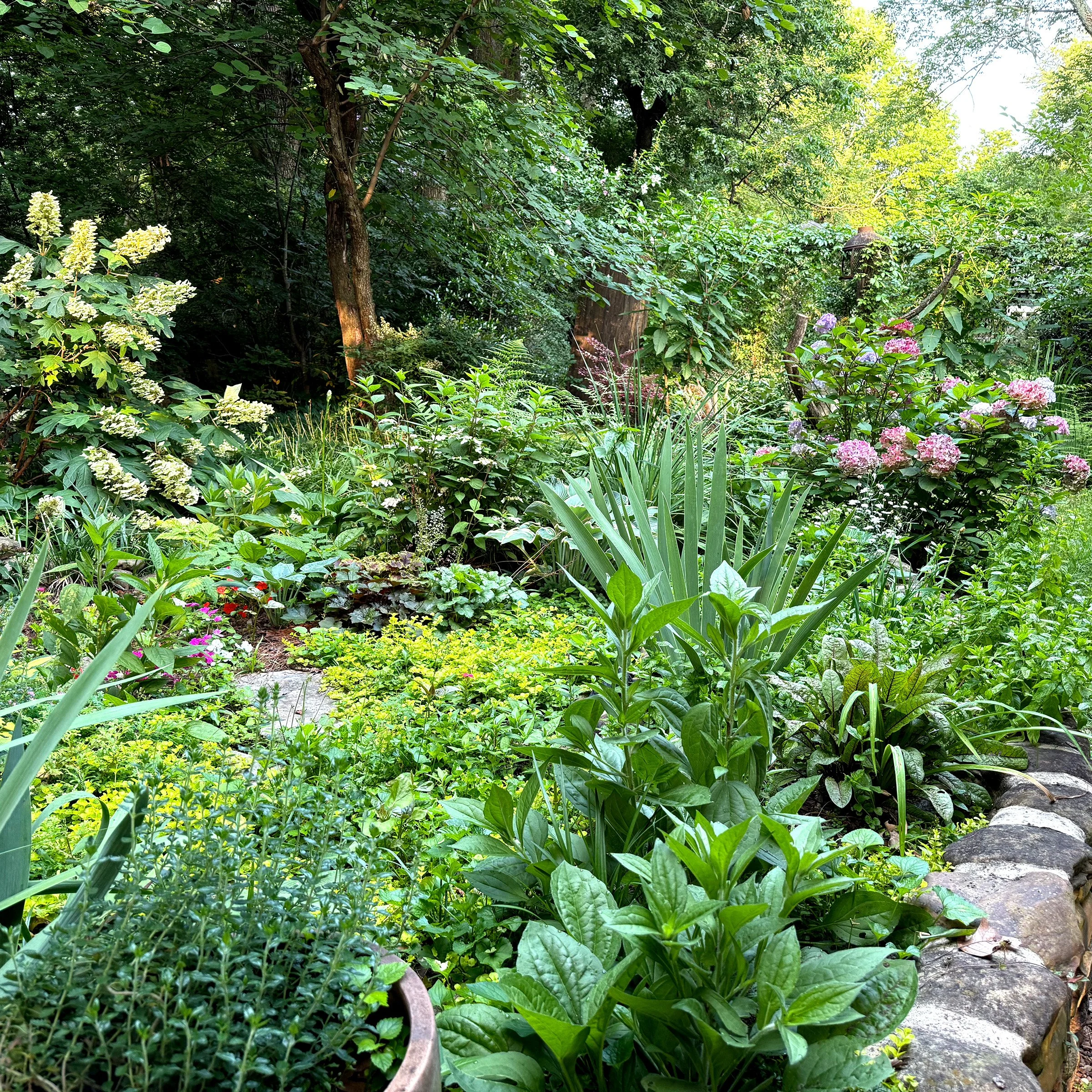It’s no secret that I am awash with scraps and scraps and scraps of formerly known quilted objects. I sometimes wonder if this is simply an obsession or a valid experimental process for making art.
scrap curtain
I love the quote by the painter, Amy Sillman:
“I finally realized, over the last thirty years, that what I was interested in was the transformation of something into something else. And then to something else.”
Last year I cut up a number of quilted objects into triangles and created a push/pull composition that looked like this:
Push and pull with a lightning streak down the middle.
Using previously created work brings a wealth of story and depth to the substrate. I remember working on each and every one of those triangles in their former lifetimes. While I am always inspired by the stitching and colors of the originals I still overstitch the triangular modules to establish a denser texture.
This composition seems forced and flat. So it went in the use-it-again pile in my studio.
Stage 2 (or is that stage 3?
Picking up where I stopped I played with shaping the material into a new form. The layering of the fabrics and overstitching gave the raw material a weight and ballast that helped in that effort. I could fold it, mold it, roll it and stand it up. I ended up with this helmet shaped standing object. It was fun to walk around the studio wearing it for awhile.
Push and pull repurposed into a sculptural helmet
It was a challenging departure from the flat piece and I learned a little about ballast and balance when standing a quilt up. But, bottom line, I wasn’t happy with it. So I cut up the triangles for a new piece.
Then I had a lot of triangles
Triangles are a common unit in quilt construction and also very versatile for sculpture. Put four together and you get a pyramid. Three make very handy spiky shapes that combine well into a six-sided hive shape.
The underside of the constructed object.
These triangles are getting rawer and rawer from all the manipulations I have tried. I soon realized that I had to do some hand stitching to get the pieces together if I wanted them to hold their shape.
That took a while. It’s not my favorite thing to do but there is a sense of accomplishment in doing it.
Caterpillar, close up
A spiky caterpillar, still in process.
I’m loving this shape and the versatility of triangular construction. I think I will repurpose a piece that is standing in my office to make a bigger version of this caterpillar shape. Invisible, the work shown below, was constructed with repurposed triangular pieces. She stands in my studio. It might be time to transform her into a new shape.
We all do that from time to time right?
Invisible (foreground figure) shown at the Dairy Barn in 2019.
If I build it will you come?
I have been looking into a way to offer a stitching workshop here in Memphis. I want it to be all about process and experimentation. I’m thinking a 5-day or 3-day intensive. The Shapeshifter Art School in Memphis is offering a wonderful classroom with an attached art gallery for the workshop. There are lots of details I need to consider before committing to it. Here’s my question: Would you consider a trip to the beautiful, bluesy, artful city of Memphis to spend time with me, the mighty Mississippi and your sewing machine?
